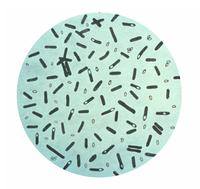
Photo from wikipedia
Foodborne pathogenic infection has brought multifaceted issues to human life, leading to an urgent demand for advanced detection technologies. CRISPR/Cas-based biosensors have the potential to address various challenges that exist… Click to show full abstract
Foodborne pathogenic infection has brought multifaceted issues to human life, leading to an urgent demand for advanced detection technologies. CRISPR/Cas-based biosensors have the potential to address various challenges that exist in conventional assays such as insensitivity, long turnaround time and complex pretreatments. In this perspective, we review the relevant strategies of CRISPR/Cas-assisted diagnostics on foodborne pathogens, focusing on biosensing platforms for foodborne pathogens based on fluorescence, colorimetric, (electro)chemiluminescence, electrochemical, and surface-enhanced Raman scattering detection. It summarizes their detection principles by the clarification of foodborne pathogenic bacteria, fungi, and viruses. Finally, we discuss the current challenges or technical barriers of these methods against broad application, and put forward alternative solutions to improve CRISPR/Cas potential for food safety.
Journal Title: Critical reviews in food science and nutrition
Year Published: 2022
Link to full text (if available)
Share on Social Media: Sign Up to like & get
recommendations!